Does your business align with your interests and passions?
Does it still hold the awe and excitement of a once winter wonderland?
Or does it feel more like an arctic blizzard with no way to see or predict what to do next?
As I write this article, we on the East Coast are right in the middle of Old Man Winter. I, personally, love the change of seasons so I tend to wax a bit poetic. So if I seem to use a great deal of puns and imagery in this particular article, I hope you will understand and still grasp meaning from it.
I often receive emails from individuals or even colleagues, who once really enjoyed their businesses. Many of them stayed up at nights—way past the early morning hours—figuring out their websites, designing business cards, and deciding upon just the right design for their brochures.
They were once so excited.
Now, with the onset of a few challenges, the passion just doesn’t seem to be there anymore. Some are so disillusioned by all that has happened, they want to just pack up and give up!
How Does All of This Happen?
Let me begin by saying that no one begins a business with failure or financial ruin as the main goal. Or any goal for that matter. However, without the proper mindset or planning, many small businesses will fail.
According to the Bloomberg, 8 out of 10 businesses fail within the first 18 months. Most will never make it past the 6-year mark. Good news, side gigs and freelance are a much better rate. I think it is 2 out of 10 or very low.
We have all heard some of the reasons. Some of the major reasons are:
- Insufficient funding or capital from the start
- Not enough business knowledge from the owners
- Lacking a 5-year, 10-year, and 15-year business plan
- Marketing the wrong product and/or to the wrong market
Now, by all means this list is not complete. However, these are the main reason cited.
How Can We Initially Prepare For a Successful Business?
If you know anything about Profiting From Your Passions™ Career Coaching—the kind of coaching that I do—you would do a few of the following:
- You would have one main income source, which could even be a regular job.
- You would have a transition plan for when to go into your business.
- You would have a good Plan B for keeping your bills paid while you transitioned and the first few years of business.
- You would also have several diversified income streams which you could do.
- You would also have some ideas—not financial advice—for ways to save money.
If and when you have all of these working for your business, there is less chance of failure. Why? Because you have income coming in from so many different sources that if one source goes dry, you have others. You have both a Plan B and in some cases a Plan C.
When I celebrated my seventh year at GBS Virtual Office Solutions, I was no longer doing a lot of virtual assistance—except for coaching and writing—I now do business development on that side of the VA coin. I also have an awesome staff, which allows me to focus more on coaching as I am doing here. I don’t try to do everything myself. I have simplified my life and streamlined my two businesses.
Every Few Months Give Your Business an Assessment
Just as you would make sure your vehicle is operating well enough to handle winter, make sure your business is also operating at top performance level.
As yourselves, these questions from time to time so that your business will not deter off track. Ask yourselves:
- Do we have all of the clients that we want or need?
- Are we marketing to the correct target market?
- Are we charging enough in professional fees?
- Are we practicing the business ethics and values that we believe or do we compromise?
- Does our business name clearly state what we do or at least allude to it?
- Is our business known for one major service or product or have we become so diversified that we don’t know ourselves?
If you can answer yes to only one or two of these questions, your business probably needs the equivalent of a winter alignment. Just like your car. Your business is probably not in alignment with your goals, talents, interests or passions. As the winter months are in alignment with the other seasons, temperature and solar distance, and the biological clocks of animals it is equally important that your business align with what you do, believe, and offer. It should also reflect your authenticity and your unique calling.
Now Let Us Expound On A Few of These Points
We need to examine the clients that we have and ask if this really is our target market. Is this really our ideal client or do we have someone else in mind. If so, we need to market to that someone else.
Are there enough clients? If not, then we are not reaching enough people. We need to get out there in a really big way. We are not being good enough detectives by not being “hot on the trail” of our target market. Sniff ’em out like a bloodhound.
One of the main reasons that we don’t challenge ourselves to find better clients is because….you guessed it! We would have to charge more! Think of it this way! There will always be those who complain about what you charge—no matter what you charge! Try charging more and see what happens.
Do you feel as though you are constantly compromising your values and business ethics to please a few clients? Don’t. You never want to be without principle. There are still those who believe as you do and will respect your decisions. These are the clients that you want.
Does our business name remind people of the type of business that we are in? Or does it make them say, “Oh, but I thought you were a such-and-such kind of business.” Then our business name is not in alignment with what we do—change the business name!
Is our business known for one main product or service? Or are we still the same dog-grooming/resume writing/catering service that we once were. Well, maybe not that diverse, but consider this. Are your clients able to make the distinction between your coaching business and your copywriting services?
If not, then consider at least separate web sites to emphasize the two different services. Have both of these services still point to one main company. You can still do both of these businesses or some combination of them. Remember, additional income streams as a backup.
You may really want to do some winter tune-up work on this whole issue of how many services to have under one business. You could always have two divisions or entities under one company name. Then again, you could have two separate businesses (recommended) with separate web sites and separate business cards. You could even have an additional source of incomes that you wouldn’t have to work so hard for. Examples are renting out a spare room in your home or having an eBook to sell.
In Conclusion
So there! I hope I have gotten you at least out of that winter blizzard that your business was in and back into the wonder and awe it once was. Now take off those sunglasses and adjust your focus to seeing your business in a new light.







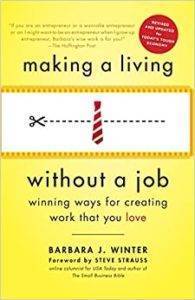
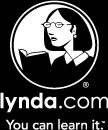


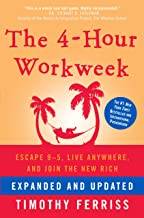





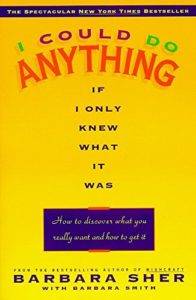
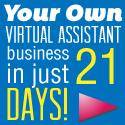
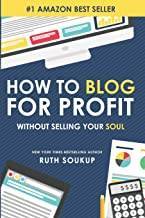
I’m hitting the 18 month mark with my business. And funding has been an issue from the beginning, and just recently I’ve become a bit disillusioned. I’ve never really considered my “target” market. I’ve always kinda rolled with whatever audience/market I’ve been lucky enough to get – usually folks just like me, which is good – that’s who I’m working for, that’s the need I’m filling. However, they (like me) don’t have the ability to fund my business. This article has made me consider different ways to market to a more profitable audience, in addition to my “regulars.” Perhaps then, my funding (and my outlook) will improve.
Congratulations on hitting the 18-month mark in your business, Phoebe. I just celebrated 7 years at my virtual assistant business, my other business that this business grew out of. Don’t rule out product creation. You could certainly create products for your business and use those as income streams. Most consumers will pay between $10 to $35 for an eBook or course. I have helped many people create some of those products over the years. It’s really being able to create backup (Plan B) for a business while it grows.
I have not only a Plan B & C, but a Plan D, E, F, and G! In all actuality, I am probably spread too thin, and the diversification of my income is so confusing and disorganized that I should probably make a Plan H to get them under control! 😉
Your post is very informational to folks, though. I’ve always heard wise counsel that having income from various sources is a good idea when starting a business and trying to be your own boss.
Just wanted to say I love your articles! And, the imagery of the winter blizzard is perfect – I’m on the East Coast too – in NC, and this weather this week has been wild. …much like having your own business!
Dee, this storm certainly has been a mess hasn’t it? LOL
With income streams, you do have to monitor them so you are not spread so thin. This is why I recommend seasonal ones or even creating your own products to sell, which can sell from Amazon or any affiliate place.
A couple of years ago, I decided to go full time with my writing. My vision was clear in that I’m gonna write and sell books. Of course, it was easier said than done. The problem is that I didn’t really have a real plan. Vision is great, but it needs something tangible to make it work. This article lists down pretty much everything that I should’ve done before transitioning. Wish I paid more attention so I could’ve avoided doing some mid-course corrections.
This is a very common mistake that people. They figure things will just fall into place if they put in the hard work. Now, don’t get me wrong. Putting in the work is important, but you also need a “Plan of Action” to refine and to keep on track.